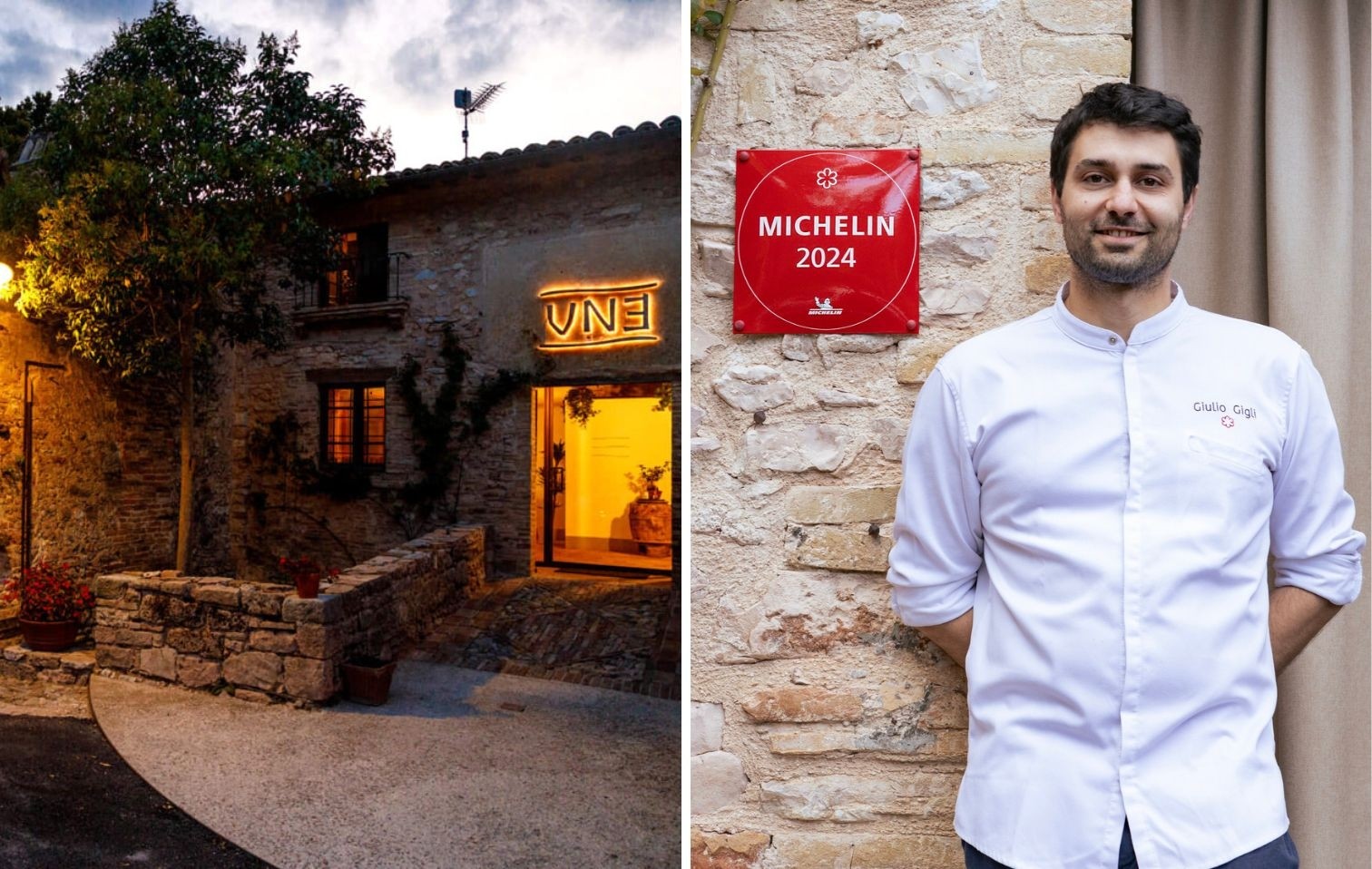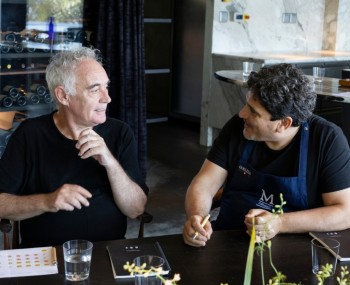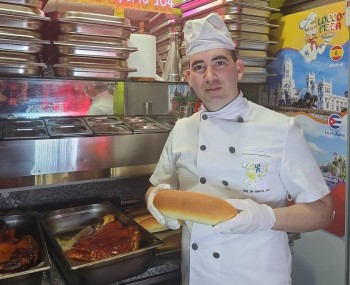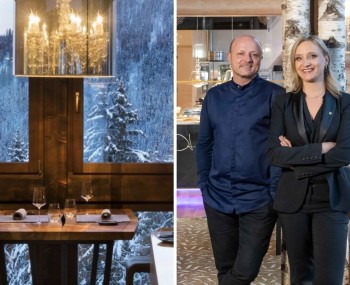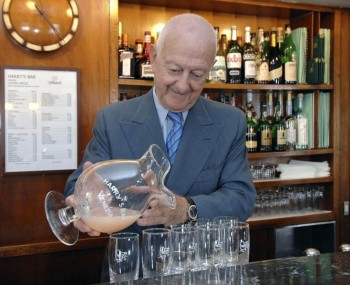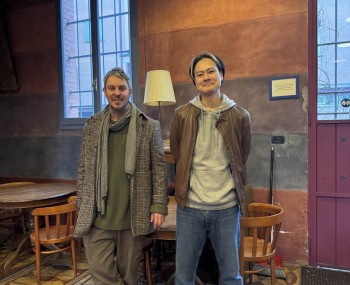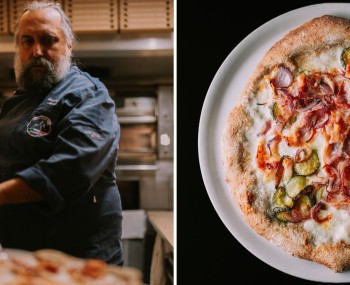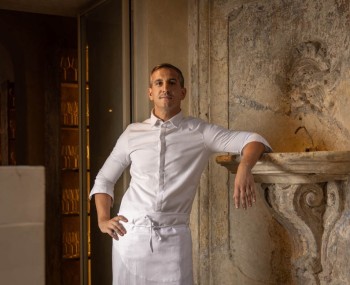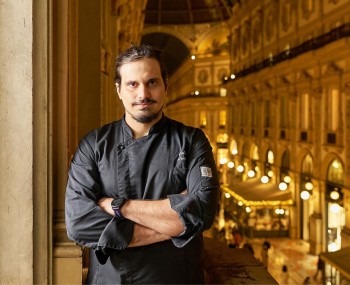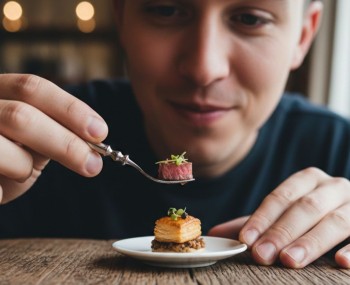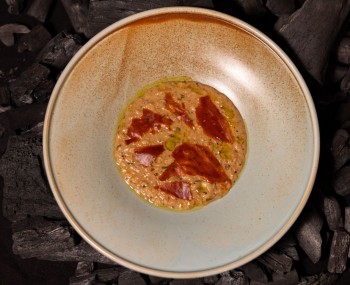A former mill in a Umbrian village that has more history than inhabitants: it's the surprising location of fine dining led by Giulio Gigli, a young talent who trained in Europe's best names and then returned home.
THE NEW UMBRIAN CUISINE IS A "NEW CLASSIC"
Three years after opening, you're no longer a novelty, and (perhaps) you still can't be a classic. Capodacqua di Foligno has more history than inhabitants, and around it are only woods, mountains, and streams; Giulio Gigli has a resume that everyone knows: Il Pagliaccio in Rome, with Anthony Genovese; Le 1947 à Cheval Blanc, with Yannick Alléno; da Benu, three Michelin stars in San Francisco; Disfrutar in Barcelona, today three Michelin stars and fresh winner of the World 50Best Restaurant.
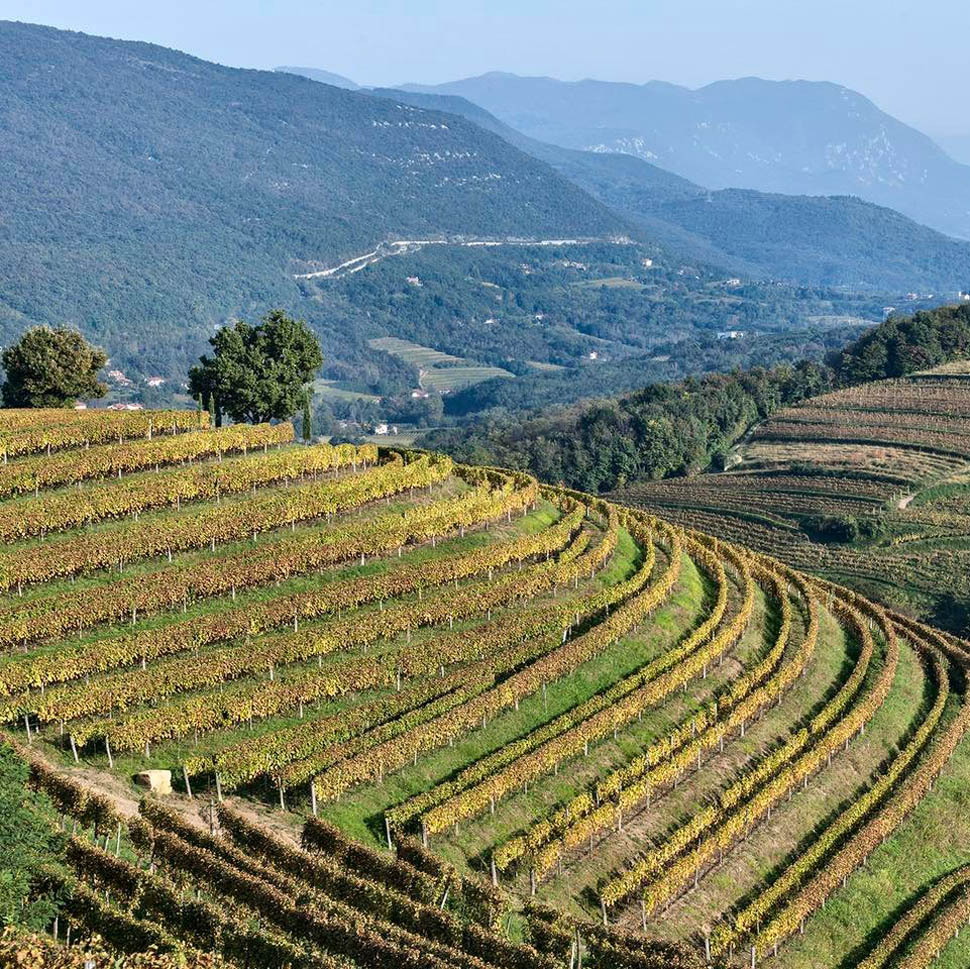

Four years ago, few would have predicted a future for him in Umbria, yet in August 2021, together with partner Lucile Kopczynski, he opened Une, where in the past ('400 and then '600) was a flour mill and an oil mill, a secular cathedral in the midst of crossroads of water trade and men.
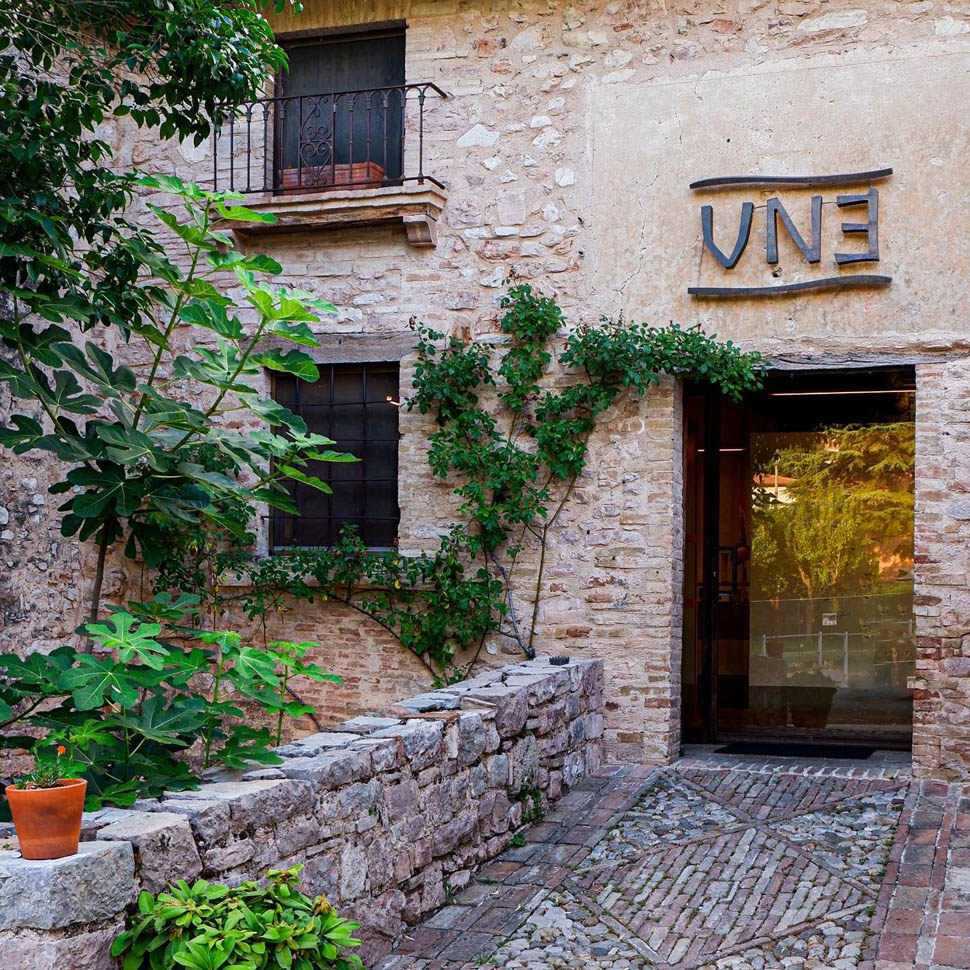
Since the very beginning, the house manifesto reads, "The gastronomic project unfolds through three keys: sustainability, which involves the reuse of kitchen and garden waste, attention to the seasonality of ingredients, and the relationships with producers, customers, and the kitchen team that are at the heart of the kitchen."
THE SETTINGS
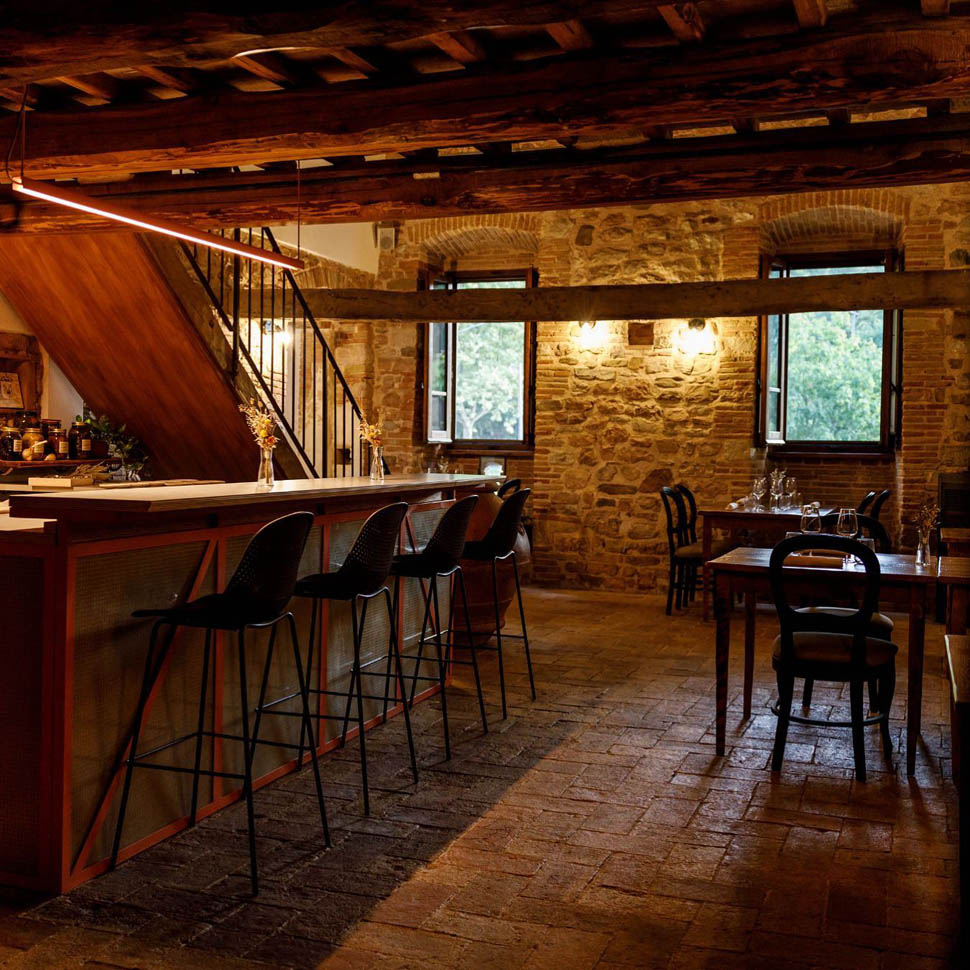
And indeed as soon as you cross the threshold of the entrance you realize that the former mill is still a cooking and hospitality "bottega" in the noblest sense of the word, welcoming you with a map of the vegetable garden posted on the wall. Past the first room here are brick walls, rough terracotta floors, wooden tables with minimal mise en place. The first approach to the room is to the work counter, the connecting point between the dining room and the kitchen.
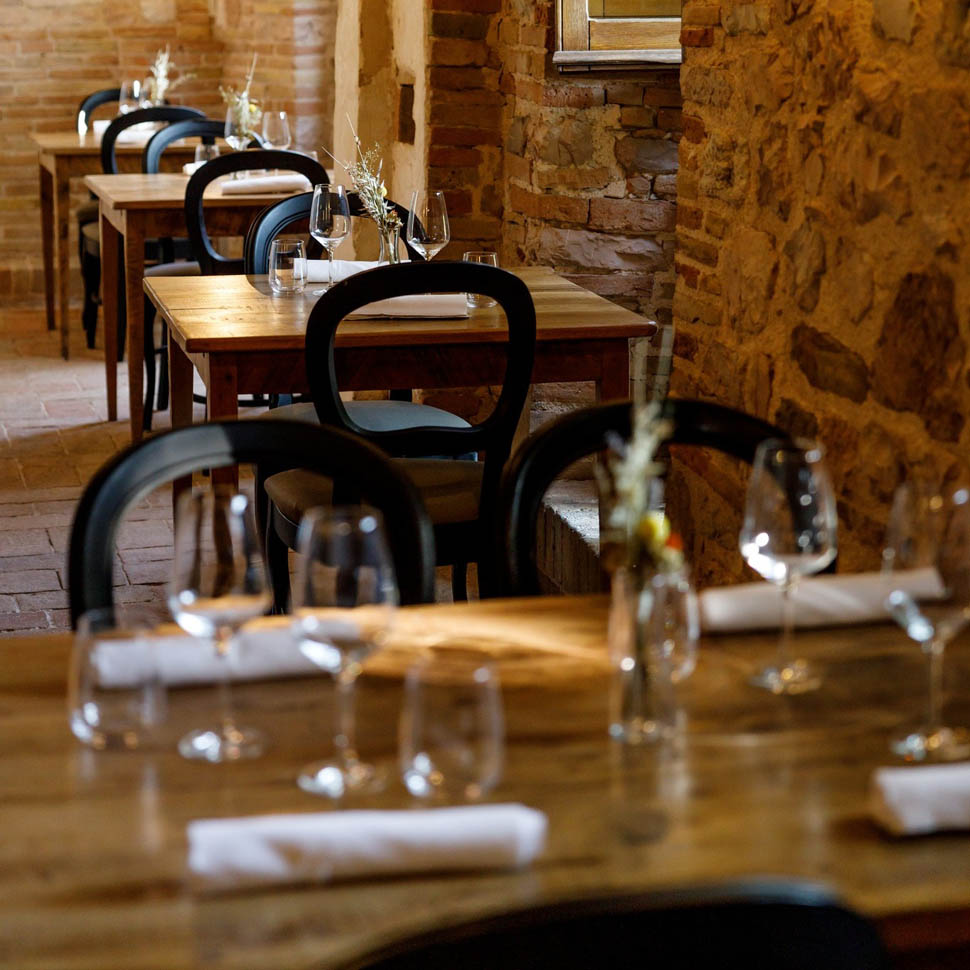
There are three rooms: the first and main one is dominated by an austere wooden mezzanine; the second room is immediately to the left of the main one; the third on the right, smaller, features a preview of the cellar and a small table.
Perhaps the only difference that can be noticed from the beginning is in the atmosphere: there hovers a greater sense of awareness, harmony and serenity, unleashed by an all-female dining room team, always smiling and attentive, led excellently by Gaia Landrini (maitre) and Federica Capodicasa (sommelier).
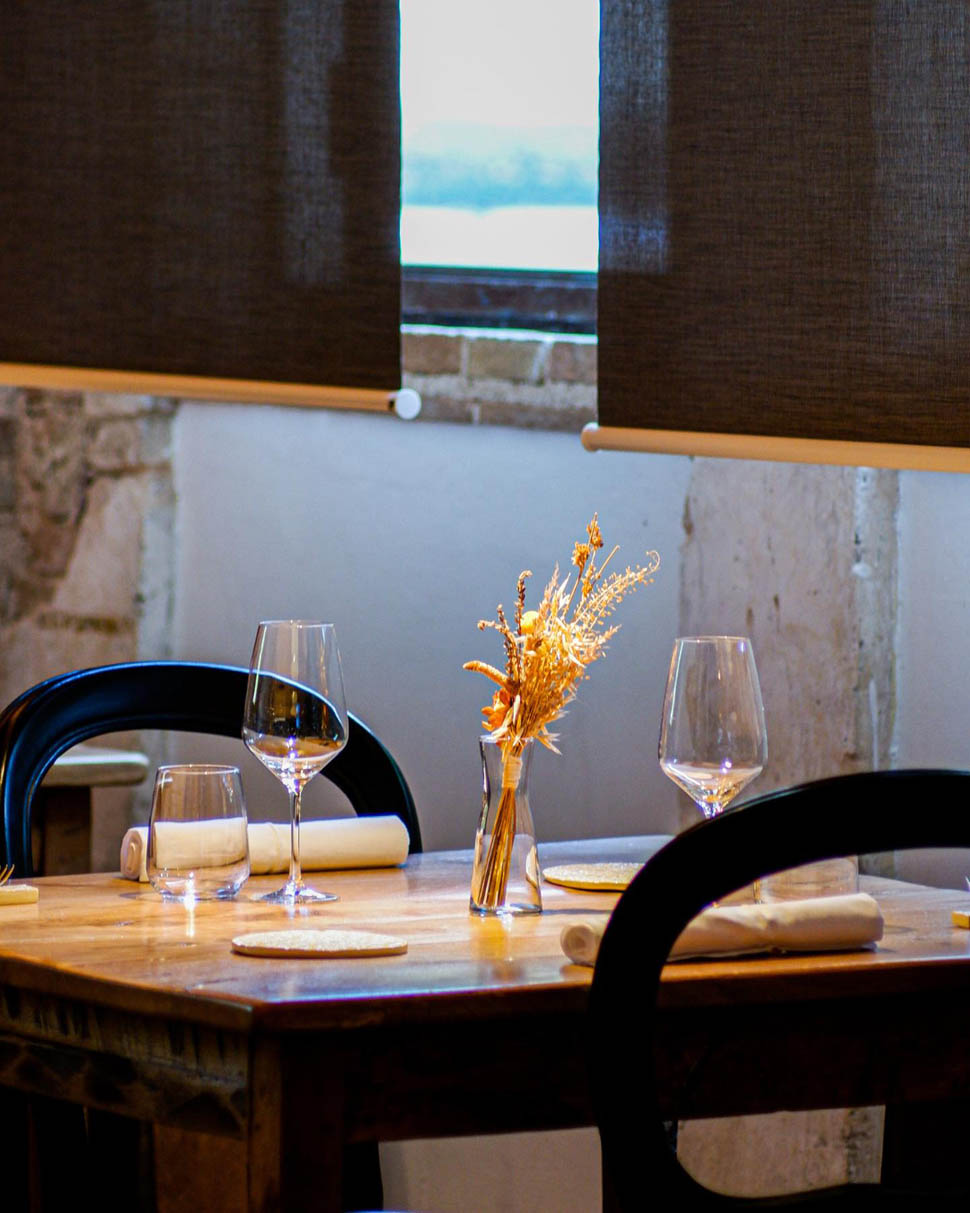
The wine list has gained importance, topping 270 labels, including level gauges. Honest markups. The menu has also stepped up: the first tasting "Acquedotto" counts 6 courses at 75€; the second tasting "Relazioni", 8 courses at 95€; and there is the option of tasting the "Menu Completo", the “Full Menu”, for a total of 10 courses at 125€.
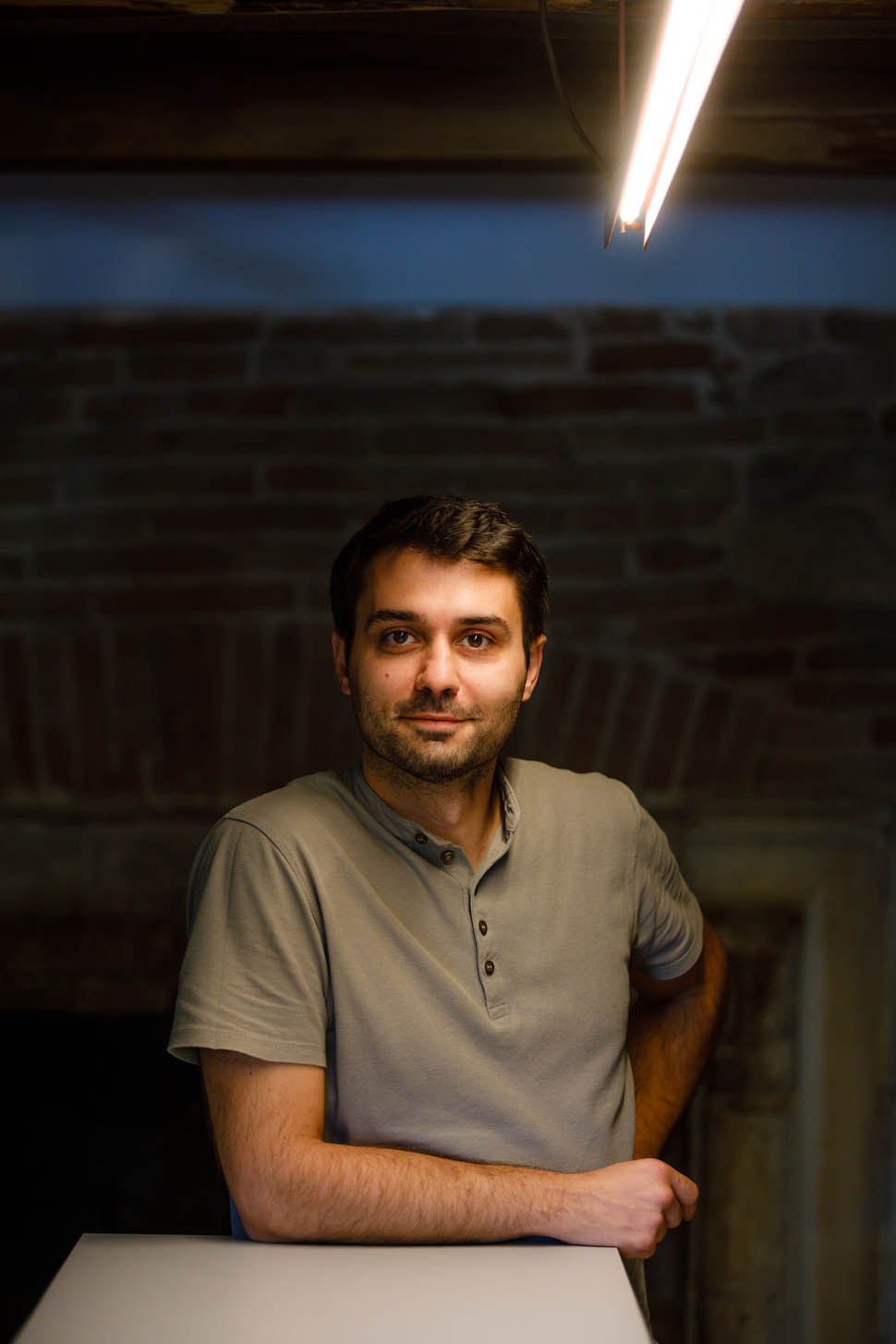
There is, attached to the menu à la carte, a second one dedicated to the "Diario di Campo", a project that investigates Une's botanical habitat, including garden, arboreal field, vegetable garden. There is no shortage of a long list of all the local suppliers and producers the company works with, with relative, and honest, distance from Capodacqua. Also on the main menu is a surprise: a selection of dishes the chef offers for the children who sit at UNE's tables.
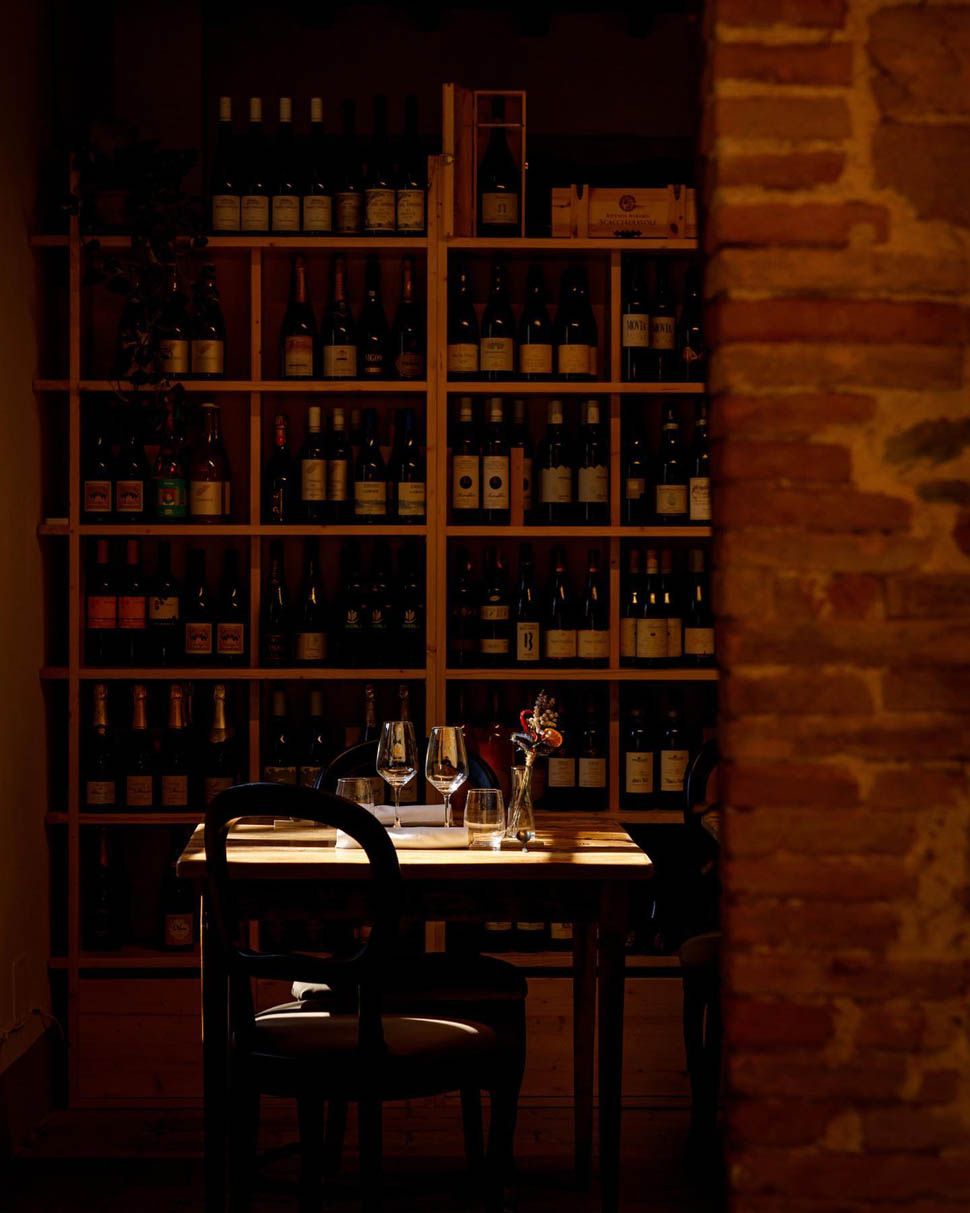
THE DISHES
I begin in two stages: first an aperitif, then an Italian-style appetizer. For the appetizer is served a "Pigeon liver bonbon with pork lard and pink pepper," a "Saffron puffed tapioca crispy from Capodacqua, beef tartare and celery kimchi, marrow mayonnaise," then a "Tomato butter and buffalo milk," and finally a new version of the house signature "Fried goat blue tigella, walnut pickles and walnut praline."
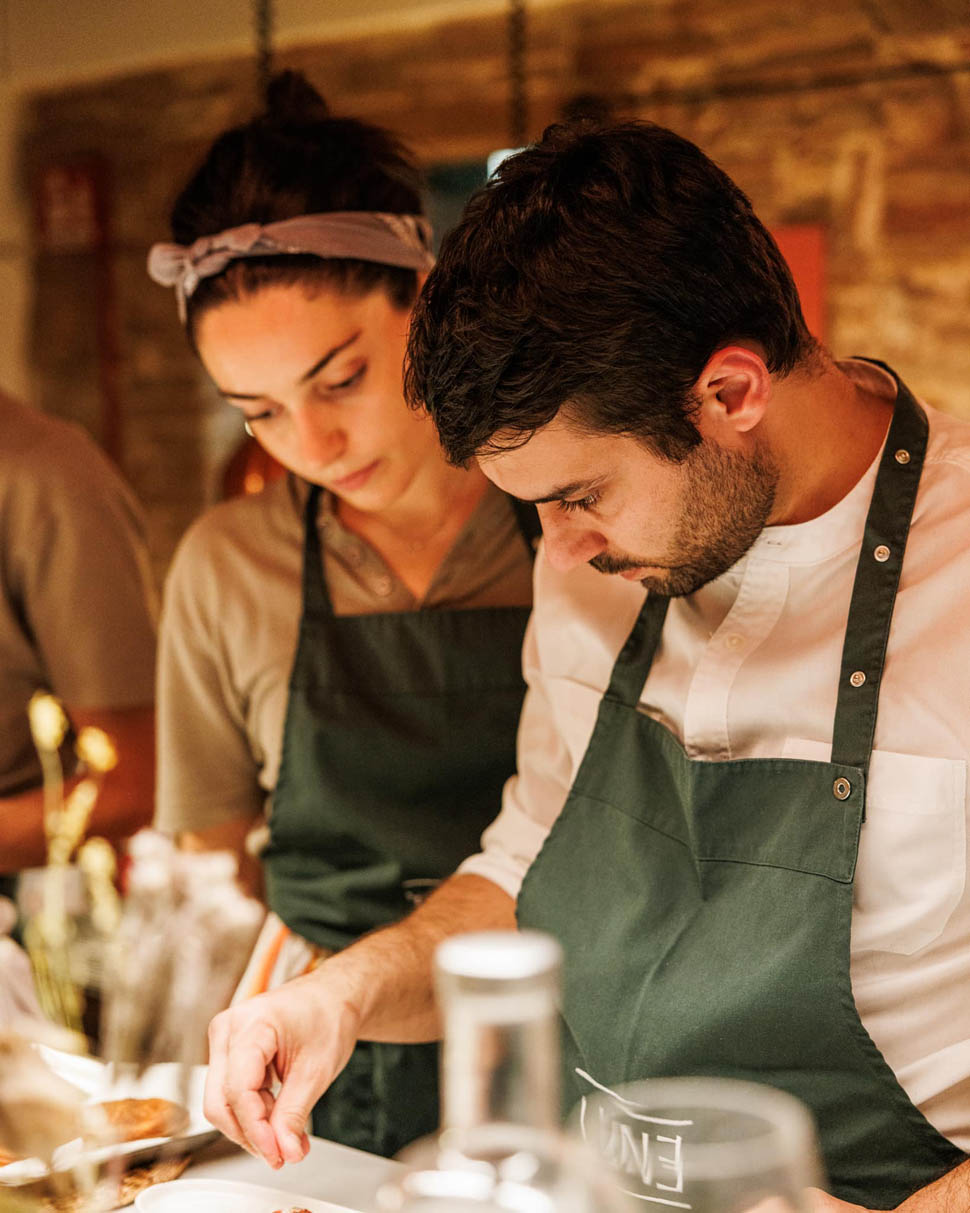
The bonbon is a controlled-explosion mine that allows all the ingredients to be distinctly recognizable until the end, in which the pink pepper dominates; the tartare is a bite in which kimchi and mayonnaise leave the stage to the meat au naturel; and the tigella is a showcase of how it is possible to bring something eternal into the 21st century.
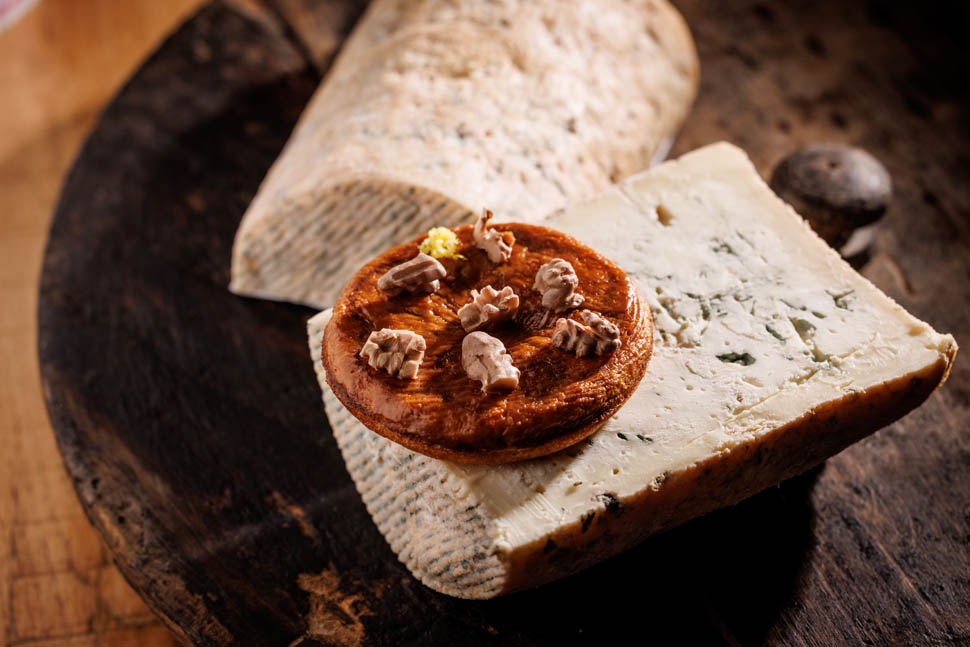
Moving at a pace toward the Italian-style appetizer: "Pan-seared snails with fresh fava beans and fennel mousse," "Caprese deconstructed with buffalo mozzarella mousse, wild herb salad dressed with basil oil, walnut praline and mozzarella and tomato water jelly," "Pork shank terrine with lemon and capers, fresh pea mousse and garden misticanza," "Mushroom takoyaki with wild garlic mayonnaise and crispy chicken skin."
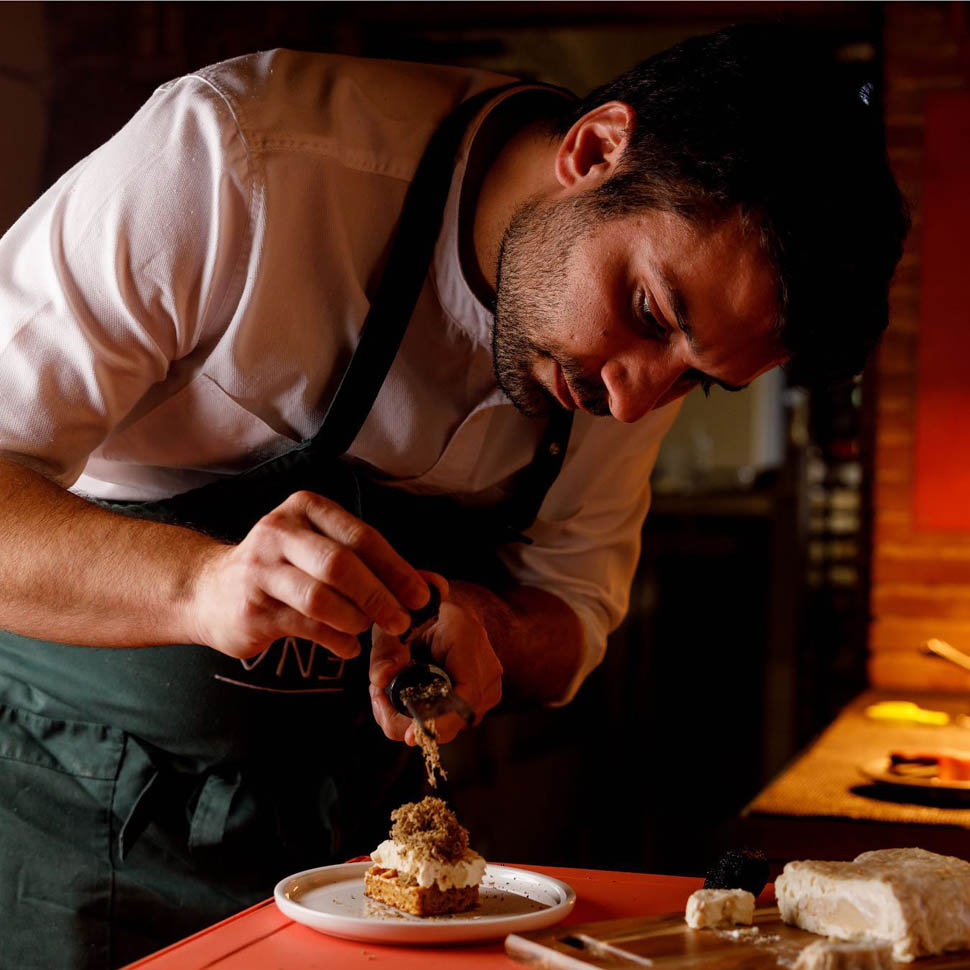
The aperitif and appetizer highlight what will seem to be the standard of the cuisine here: technique and creativity indeed, but as a means and not an end. Here cooking is done to make the palates of those seated at the table happy. The taste of each course is intelligible and understandable even to the less experienced. It will be difficult to point to a dish for which the tasting portion was not almost limiting to us. The chef's game seems to have set certain rules (local, often forgotten raw materials; minimal waste tending toward zero; popular recipes and flavors, found in the gustatory memory of all diners) and to those rules he applies all the technique and creativity learned in his career. Each step astonishes in its balance of flavor, in its roundness on the palate, in its rejection of excess, in its control of the strongest flavors, and in its simultaneous (extremely digestible) execution of classic dishes.

They are so delicate, the terrine, the Japanese meatball, the snails. Flavors that belong to so many, and for this reason recognizable and appreciable. Background note, always present, the vegetable one, never detached from the context, which sometimes takes the dishes into the territories of bitterness, and other times gives freshness to a dish that needs it. The standard of "New Umbrian Cuisine" is repeated in the first courses as well. The first encounter is a "Raviolo filled with baccalà mantecato (creamed cod), pil pil and green bean juice." What might have seemed like a betrayal of dogma (using codfish) is instead described to us as an ingredient historically widely used in the area. The dish is an excellent fresh pasta dish, with paper-thin pasta sheets, grandmother-proof cooking and the most delicate filling.
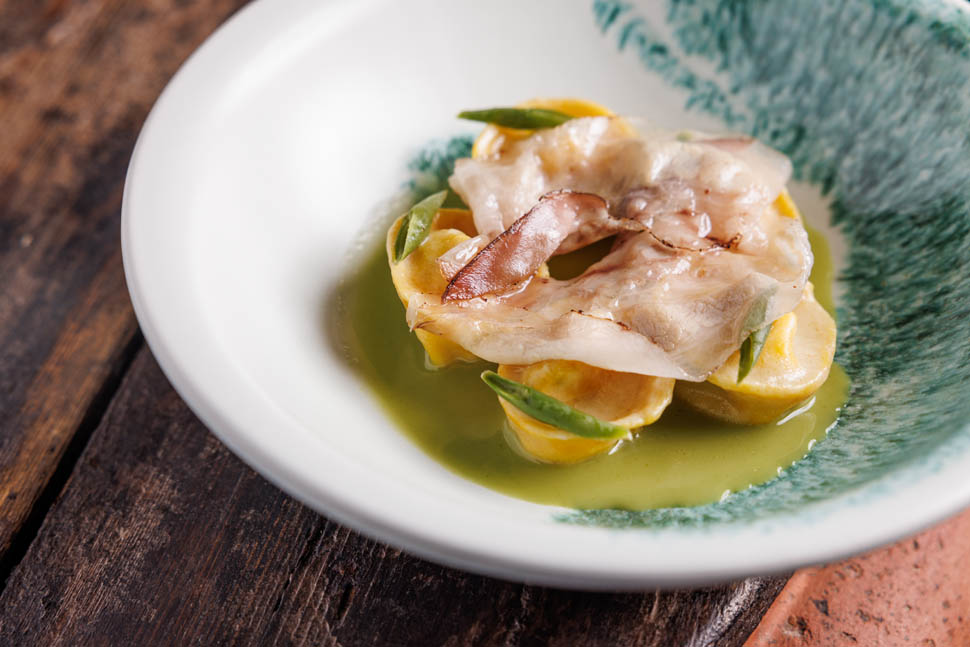
A veil of lard on top helps give backbone; the green beans lighten the overall with freshness and crispness. Again, the chef's international experience becomes a compass for navigating the surroundings of Capodacqua and area cuisine. Second step is with "Cavatelli paglia e fieno, pork ears, Colfiorito lentil mousse and crayfish." Cavatello is a difficult pasta format to encounter at certain levels, even more so in the paglia e fieno (lit. straw and hay as they are green and yellow) version. It is a round dish, without extremes, again very balanced while never trespassing on the easy. The lentil mousse helps chew the cavatello, the pig ears add a delicate note of animal protein, and the addition of cedar protects the mouth from excessive fattiness.
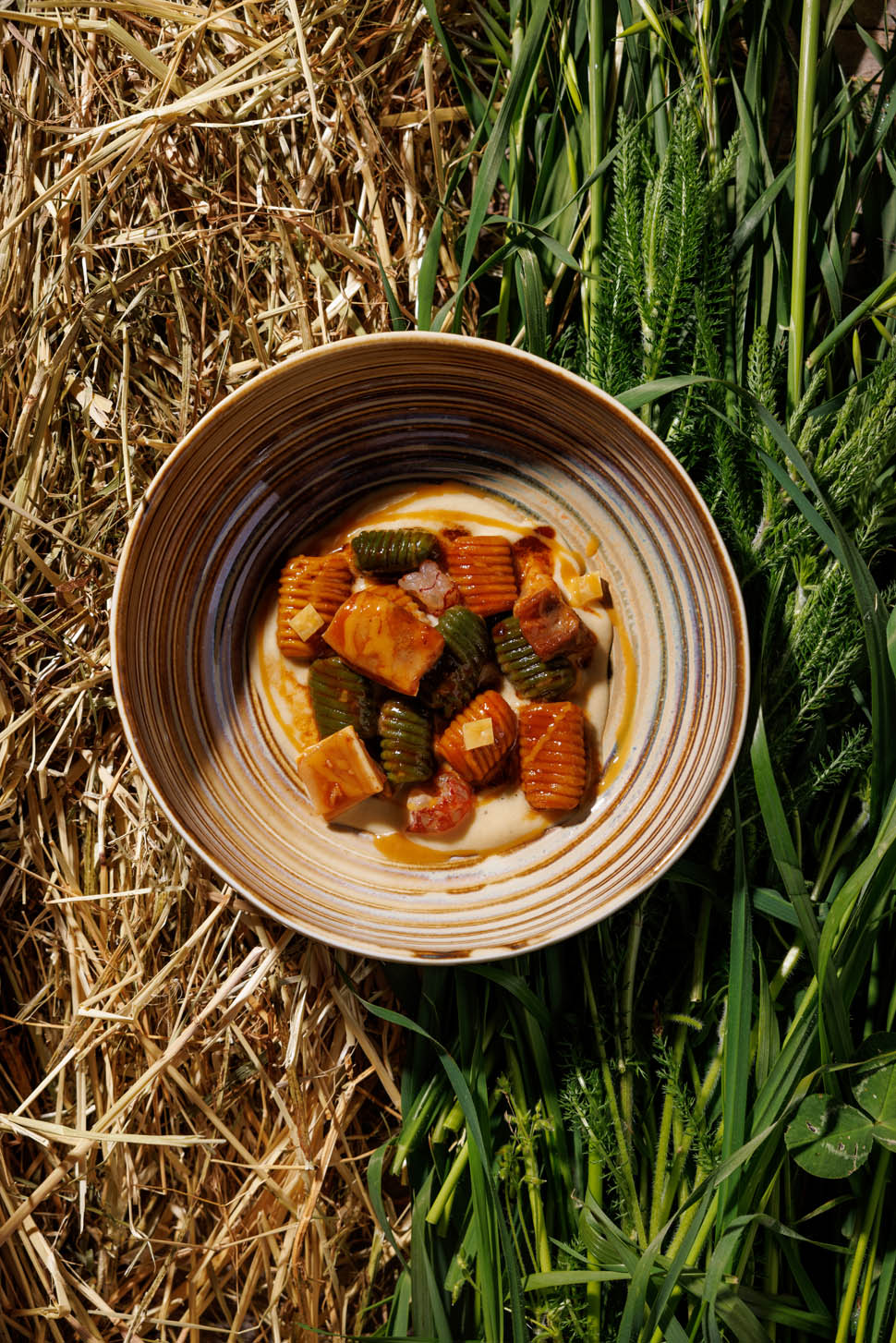
The main courses initiate a sort of masterclass on protein cooking and minimal plating. The "Brown trout rolled in a leaf of wild garlic, wild garlic, flower vinegar, and stewed almonds" is the dish of the evening. If the perfect cooking of the trout is not surprising, what amazes us is its quickly becoming a sort of co-starring player, with respect to the interplay between the pungent and aromatic flavor of the wild garlic and the bitter note of the stewed almonds.
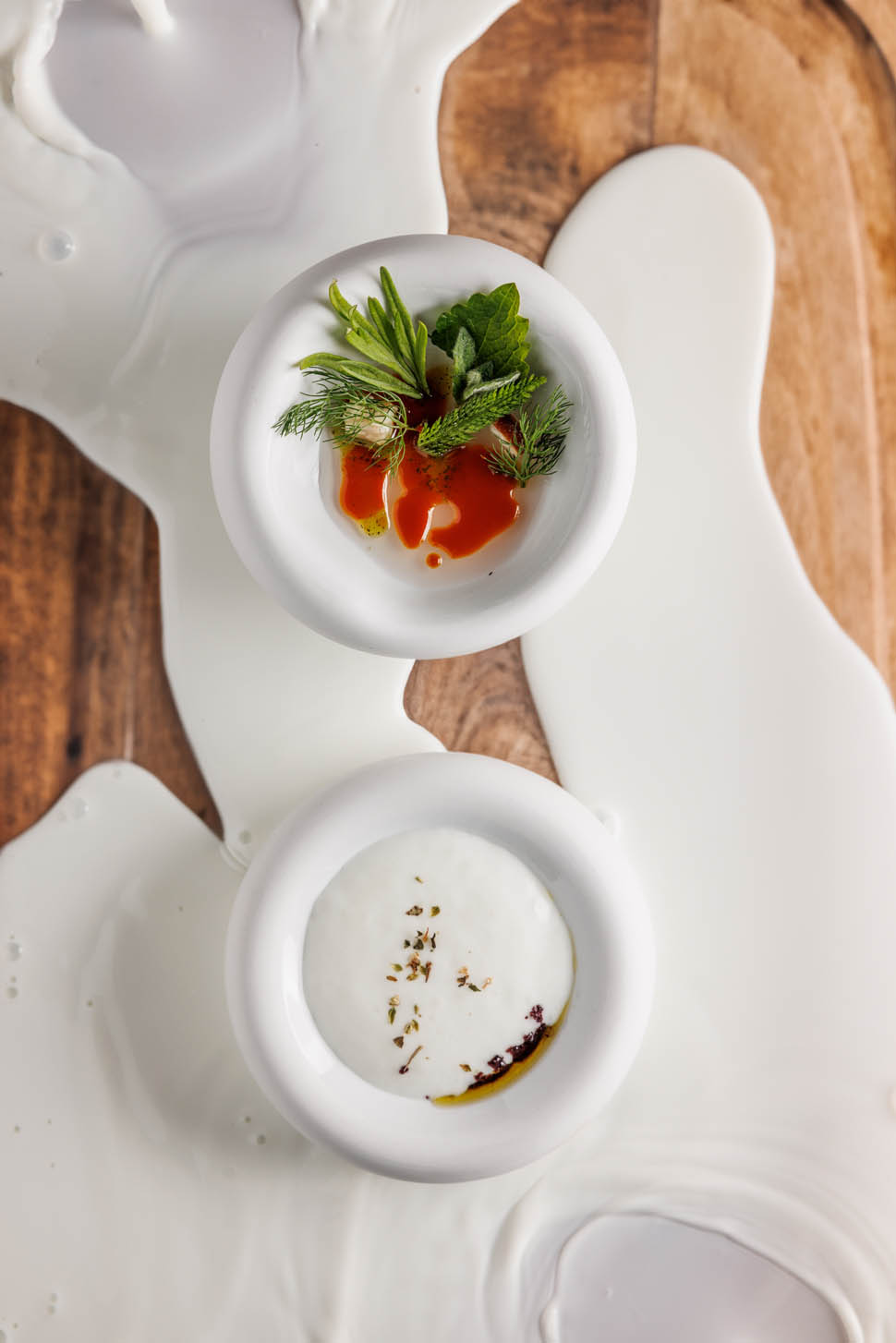
The "Capodacqua pigeon, agretti from our garden, green apple gel, anchovy colatura vinaigrette, pigeon cooking stock with added Norcia ham" is yet another variation on the house pigeon. Of the house because it is already a signature, and from the house because the pigeons are raised by the neighbor. Again a meat cooked to perfection, elevated by a cooking stock that goes so far as to exploit (masterfully) even a slight rancidness to amplify the strength of the meat, countered then by the acidity of agretti, green apple and vinaigrette.
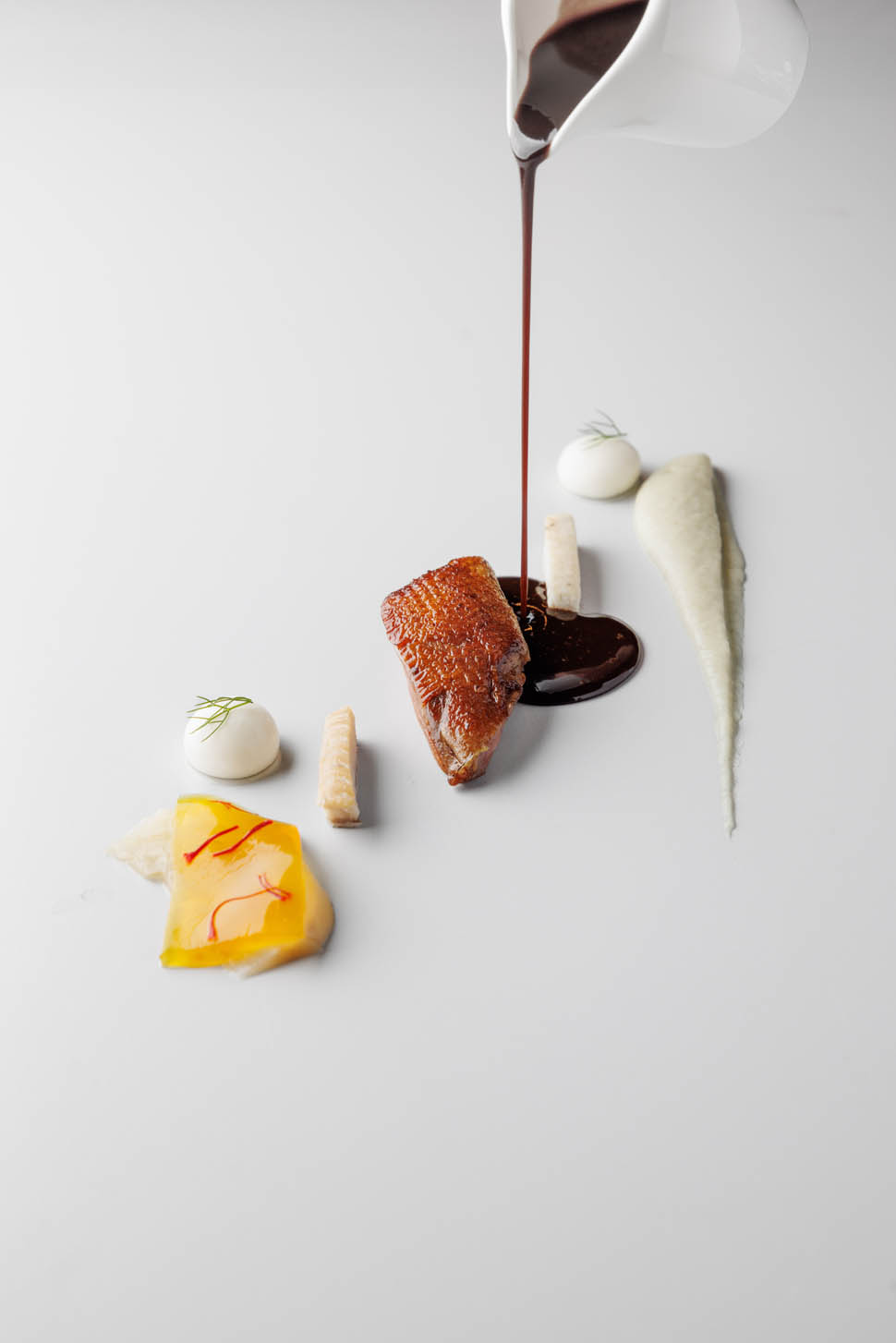
It is difficult for the "Beef bavetta, bark, pine sprouts and asparagus kimchi" to compete in front of the previous two mains, but it should be given the honor of war. Tasted on its own, the meat is an enthralling duet between the succulence of the bavetta and the smokiness of the bark; together with the pine and kimchi it opens up to a controlled spiciness that deserves an encore.
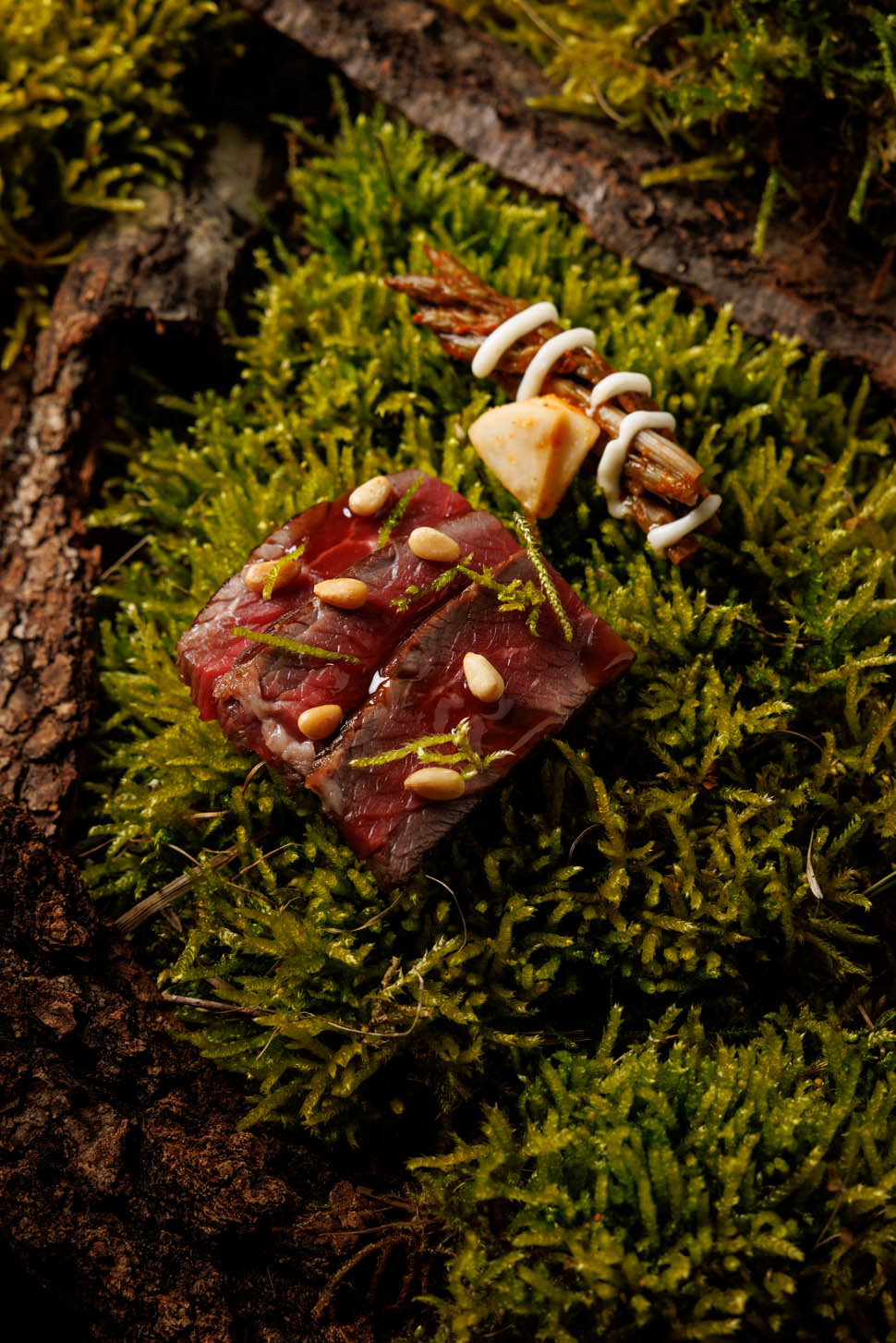
Side note for the pre-dessert: the "Artichoke in syrup, artichoke toffee, Cynar reduction, and ponciro orange granita" is an exercise of unbridled creativity that would be worthy for the artichoke toffee alone. The ending is all about a "Honey parfait, beeswax ice cream and royal jelly," which beats "Une's Zuppa Inglese". Both of excellent workmanship, but the previous is of unparalleled gluttony.
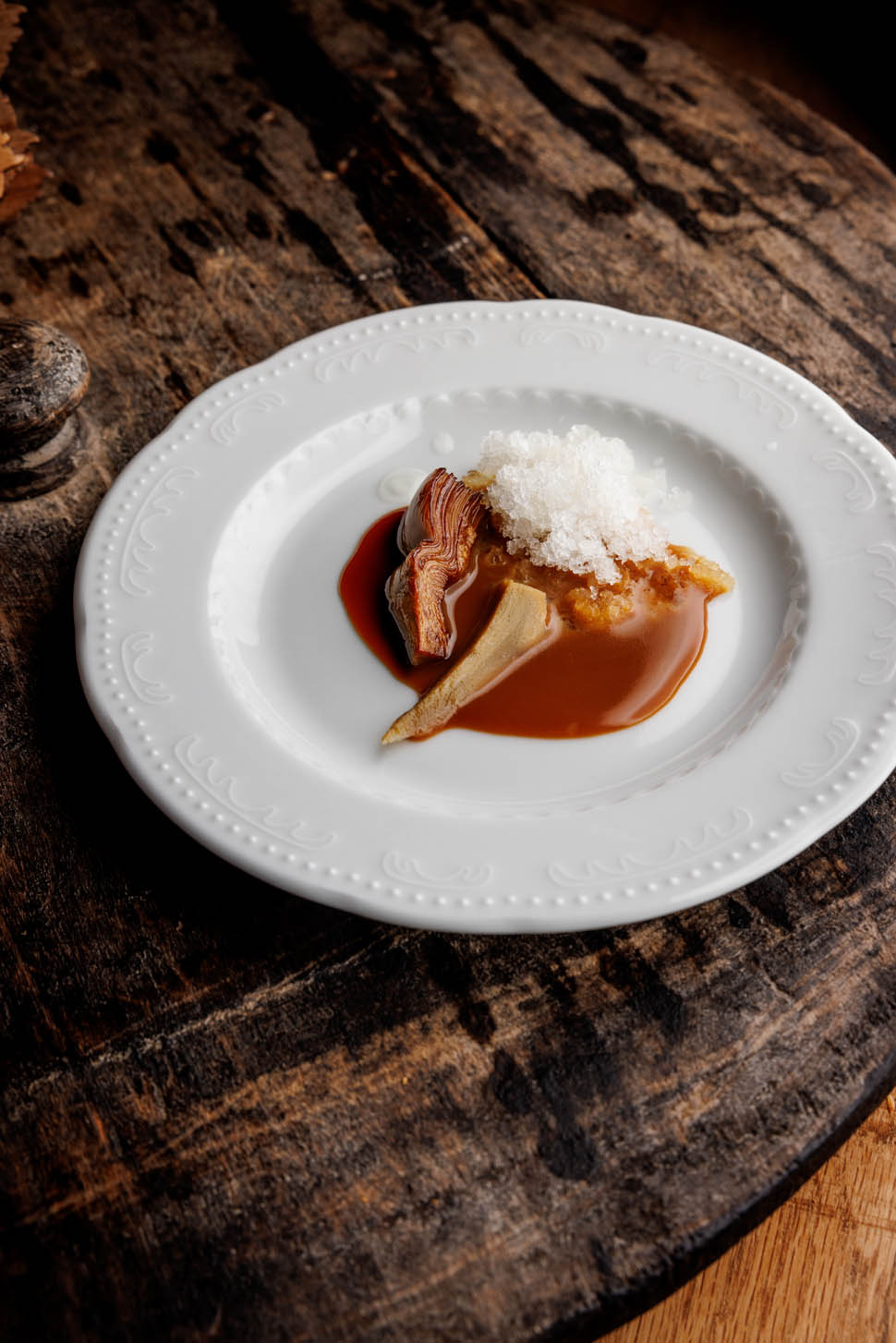
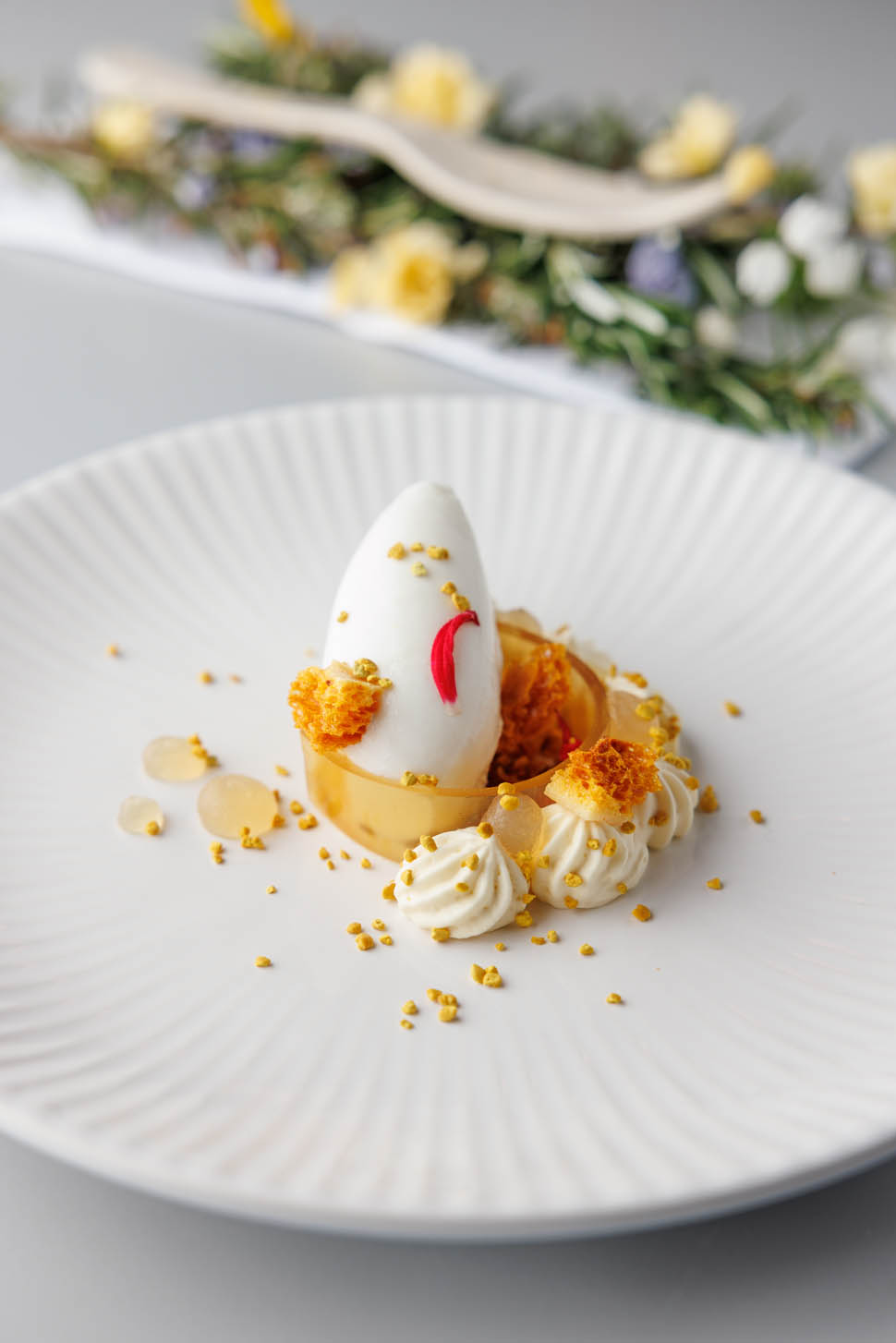
The petit-four presents "Dried strawberry sphere, black sesame praline and yogurt", "Chocolate and peanut sphere", and "Roasted tangerine marshmallow over cardamom, vinegar and elderberry white chocolate crumble", and it certainly is a nice way to say goodbye to diners. A goodbye that, to all tables, is then brought personally by the chef. Gigli tells us, "It's natural that fine-dining enthusiasts are always looking for something new; that's what I do, too. But I have to think first and foremost here of friends from the area, making Une a place for them to return to often. Our achievements have introduced us to new guests from far and wide, but for us the greatest pleasure is seeing how we have cultivated a local community of customers."
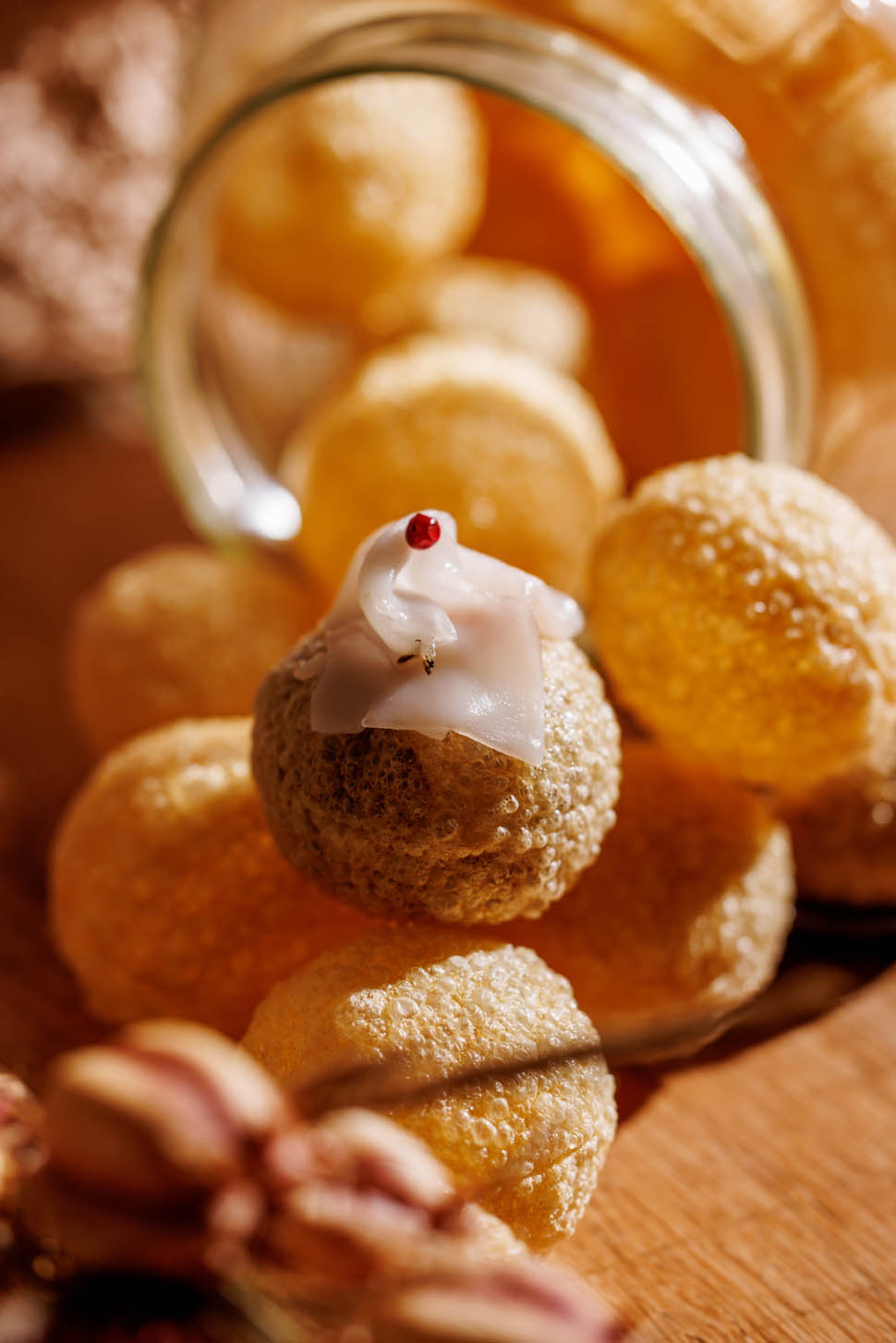
And there we have some elements that find explanation: dishes designed for children; a serving pace that allows 10 courses in 2 hours and a little more; a menu that puts talent and technique at the service of the diner, who is called upon to enjoy a cuisine that is contemporary, sustainable, creative, and above all understandable to everyone; an informal approach able to make anyone feel at ease; and a brigade capable of creating in not even three years more than 200 dishes, because on the one hand "some ingredients last very little," on the other hand the hard core of loyal customers deserves to discover new dishes all the time.
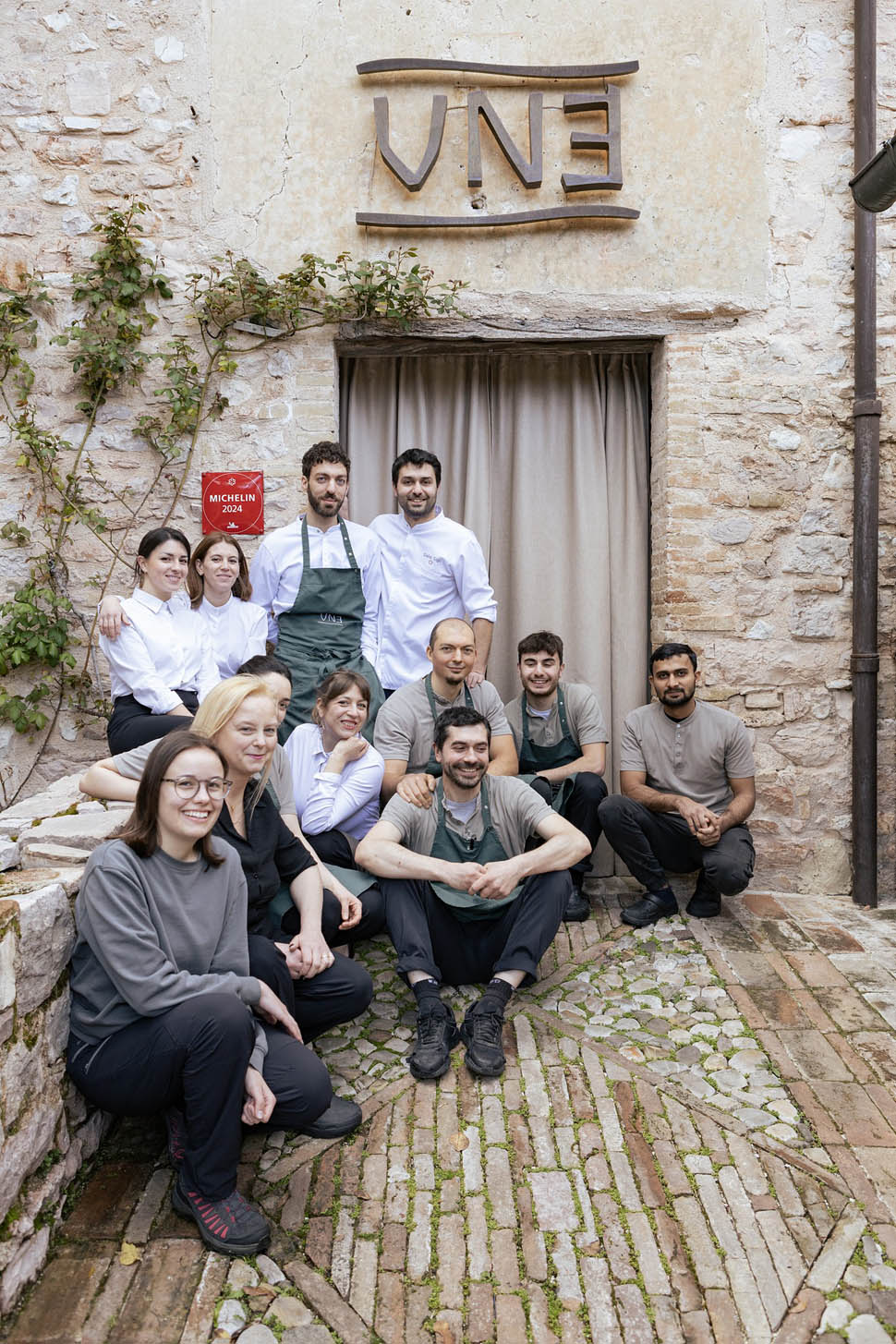
But in the end, what is a classic if not a pattern that works?
A pattern that is sustainable not only in the kitchen and for the environment, but also in the budgets, toward employees, suppliers, the entrepreneur, and of course toward customers.
CONTACTS
Ristorante UNE
Via Fiorenzuola, 37, 06034 Capodacqua PG
Phone +39 334 8851903
Opening hours
Thursday: 8 p.m.-9:30 p.m.
Friday: 8 p.m.-9:30 p.m.
Saturday: 1 p.m. to 2 p.m. | 8 p.m. to 9:30 p.m.
Sunday: 1 p.m. to 2 p.m. | 8 p.m. to 9:30 p.m.
Monday: 1 p.m. - 2 p.m. | 8 p.m. - 9:30 p.m.
Closed Tuesdays and Wednesdays
